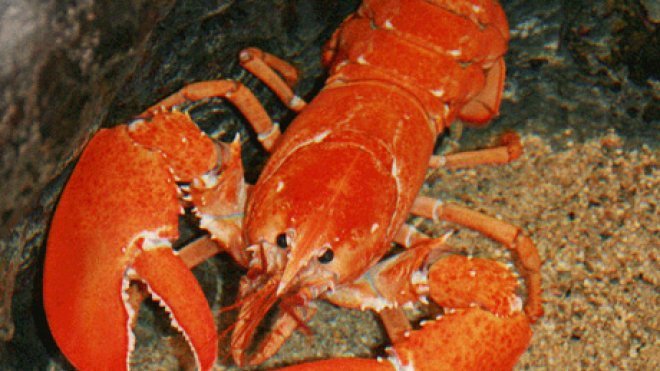MNS Faculty/Student Team Transforms Audubon Society's Bristol Aquarium
New setup at Audubon's Environmental Education Center in Bristol surpasses standards for today’s public aquariums in areas of energy efficiency, exhibit design, water quality and animal care

BRISTOL, R.I. - If you visit the Audubon Society of Rhode Island's Environmental Education Center in Bristol this summer, get ready to stumble upon a number of new exhibits featuring marine animals -- like a rare orange lobster -- thanks to a state-of-the-art aquarium renovation led by a team of marine biology students and faculty and staff from RWU.
Andy Rhyne, associate professor of marine biology in the Feinstein College of Arts and Sciences, and a team of students worked for three months to create a new infrastructure that would transform Audubon’s aquarium exhibits.
"The Center was built in July 2000, and we got to the point that we needed to do a major renovation with the aquarium space," says Anne DiMonti, director of the Environmental Education Center. "We needed desperate help.”
The aquarium exhibits faced challenges related to animal health, poor use of space and wasteful energy consumption. With Rhyne’s aquarium design expertise and a group of RWU staff and student workers that knew the ins and the outs of aquarium setup through their work caring for the fish and marine animals as part of their coursework, the University proved an ideal partner for the renovation.
“We developed a plan for how to renovate the aquarium and bring it up to today’s standards,” Rhyne says. “Through the partnership, Audubon is able to gain our expertise in terms of being able to design and build the new exhibits, and we’re able to use the Center as a classroom environment. It’s a very rare thing for students to get their hands on this size of an exhibit and to actually build something that will be here for the next 20 years.”
With the renovation, which included both the external exhibits that visitors see as well as the “life support” or internal infrastructure, Rhyne was able to create a new system for Audubon’s aquarium that surpasses the standards of today’s public aquariums in areas of energy efficiency, exhibit design, water quality and animal care. As a result, Audubon has been able to introduce new aquarium exhibits and reduce its power use and utility bill by 30 percent.
The model Rhyne created is now recognized as a new, progressive method for aquarium systems design in the industry. Other area public aquariums have visited Audubon to learn and potentially adopt the innovative setup. Rhyne is also planning to publish a journal article on the design and has spoken at a number of industry conferences on how to create energy-efficient aquariums.
Rhyne plans to develop additional exhibits, such as adding seahorses and coral reef, and will incorporate the work in his Aquarium System Design course, in which students will again help on the exhibits as part of their lab work.